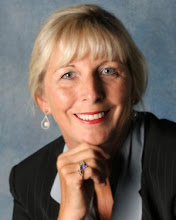We have the intelligence and the technology, but can we overcome the political hurdles?
By Sara Wyant
When Dr. Norman Borlaug, father of the ‘green revolution’ passed away in September, leaders from around the globe memorialized the Nobel Peace Prize winner as the "greatest hunger fighter of our time." But even he acknowledged that his work was far from over, especially in places like Africa, where one-third of the population is hungry and malnourished.
A diverse group of business leaders, including MicroSoft founder Bill Gates, is committed to building on Borlaug’s progress and turning the Iowa native’s vision into a global reality. Speaking at the World Food Prize ceremony in mid-Oct, Gates said that, while Borlaug’s passing was “cause for sadness, his life should make us optimistic. In the middle of the 20th century, experts predicted famine and starvation, but they turned out to be wrong – because they did not predict Norman Borlaug. He not only showed humanity how to get more food from the earth – he proved that farming has the power to lift up the lives of the poor.”
So how did one of the world’s richest men, who co-chairs the $30-plus billion Bill and Melinda Gates Foundation along with his wife and father, come to be so passionate about agriculture and especially the role of science in agriculture?
“When we started our foundation, we agreed that our giving should be guided by our belief that all lives have equal value—that every person deserves the chance to live a healthy and productive life, Gates explained in his speech. “Over time, our search for the greatest leverage brought us to the most compelling challenge in development: how do you help people who live on less than a dollar a day?
“The answer is in the work they do. Three-quarters of the world’s poorest people get their food and income by farming small plots of land. So if we can make small-holder farming more productive and more profitable, we can have a massive impact on hunger and nutrition and poverty.
Trouble ahead?
When it comes to increasing productivity, Gates has clearly done his math, but he’s troubled by the forces who oppose some of the science-based tools necessary to reach those goals.
“Africa is the only place where per capita cereal yields have been flat over the last 25 years,” he explained. “The average farmer in sub-Saharan Africa gets just over half a ton of cereal per acre. An Indian farmer gets twice that; a Chinese farmer, four times that; an American farmer; five times that. The technology and new approaches that are transforming agriculture in other parts of the world can be applied in new ways, and help Africa flourish too.
Gates says the global effort to help small farmers is endangered by an ideological wedge that threatens to split the movement in two. On one side “ a technological approach that increases productivity. On the other side is an environmental approach that promotes sustainability. Productivity or sustainability – they say you have to choose.
“It’s a false choice, and it’s dangerous for the field. It blocks important advances. It breeds hostility among people who need to work together. And it makes it hard to launch a comprehensive program to help poor farmers.
“The fact is, we need both productivity and sustainability – and there is no reason we can’t have both,” he emphasized. “The next Green Revolution has to be greener than the first. It must be guided by small-holder farmers, adapted to local circumstances, and sustainable for the economy and the environment.
“The charge is clear – we have to develop crops that can grow in a drought; that can survive in a flood; that can resist pests and disease. We need higher yields on the same land in harsher weather. And we will never get it without a continuous and urgent science-based search to increase productivity – especially on small farms in the developing world,” says Gates.
Other business leaders join
At the same World Food event, several other leading agribusinesses provided their support for ending world hunger, as part of the new Global Harvest Initiative (GHI). This effort was founded by Archer Daniels Midland Company, DuPont, John Deere and Monsanto Company, but is open to other members. These companies already invest more than $9 million a day in research and development, according to GHI.
“We agree that we must double our agricultural output if we are to meet the needs of the world population in 2050,” said Ellen Kullman, chief executive officer, DuPont. “We believe this must be done in a sustainable way to reduce agriculture’s environmental footprint and conserve the precious resources available to us. We know it’s going to require cooperative efforts across industries and geographies, and between private and public entities. With all of us working toward a common goal, we can leverage many opportunities throughout the agriculture value chains to feed our growing, global population.”
Bill Lesher, Global Harvest Initiative executive director agrees that the dynamics may finally be right to make significant headway.
“We are in a prime position to make the difference that Norman Borlaug envisioned. At no time have we encountered such a positive environment for change, such a diverse group of leaders primed to work together,” he adds.
Agriculture News, Farm Policy, and Rural Policy
Tuesday, October 20, 2009
Subscribe to:
Comments (Atom)
